Medici Money Read online
Page 2
As bankers they came after the innovations that had given the Italians a virtual monopoly on European finance: after the invention of double-entry bookkeeping, after the advent of the bill of exchange, the letter of credit, and the deposit account. The Medici invented nothing in banking practice, unless perhaps we are to think of the relation between their parent company and subsidiaries as an early form of holding. What’s more, all the Medici would have been very aware of coming after banks far larger than their own. The Bardi and Peruzzi banks of the thirteenth and fourteenth centuries had amassed fortunes that the Medici would never equal. Both collapsed in the 1340s, when Edward III of England reneged on huge debts. Giovanni di Bicci de’ Medici was in partnership with various men of the Bardi family, employed others, and married his son Cosimo to a Bardi girl. Memories of past glory and a sense of the precariousness of banking wealth must often have been on his mind.
Then, as citizens of Florence, the Medici came after all the upheavals that had made their republic what it was: after the slow collapse of feudal law as the Holy Roman Empire turned its attention northward and lost its grip on a rapidly fragmenting Italy; after the transfer of power, amid endless upheavals, from hereditary lords based in the country to the wealthy classes of the cities; after the formation of a Florentine state with a republican constitution; after the war against papal Rome when the city’s government seized and sold Church property until the people rebelled in a frenzy of religious feeling that eventually turned political in the revolt of 1378. This was the so-called ribellione dei ciompi, when the city’s poor woolworkers tried to oust the mercantile classes as they, the merchants, had ousted the nobles a century before.
“The men left in the government,” wrote the sixteenth-century historian Francesco Guicciardini of this revolt, “were mostly plebs, men of the crowd rather than nobles, with Messer Giorgio Scali and Messer Tommaso Strozzi at their head, and with popular support they governed three years in which time they did many ugly things, most of all when, for no crime actually committed, but just to be rid of their enemies, they cut off the heads of Piero di Filippo degli Albizzi, once the most renowned citizen of Florence, and likewise of Messer Donato Barbadori and of many other innocents, until in the end, as is the custom, when the people couldn’t put up with it any more, they deserted Messer Giorgio and cut his head off; Messer Tommaso saved his life by fleeing the town and was banned from returning in perpetuity, he and his descendants, and Messer Benedetto degli Alberti, who was one of the first to support them, was sent into exile.”
One sentence, two changes of regime, various executions. “Come è usanza,” says Guicciardini—“as is the custom.” Silvestro de’ Medici, the most prominent member of the Medici family and recent head of the Florentine government, had sided with the woolworkers. The family fell into disgrace. Giovanni di Bicci, eighteen at the time, would have seen every reason for keeping his head down, if the alternative was to have it cut off.
But perhaps most of all, the Medici bank came after the great plague of 1348 that wiped out a third of the population of Europe. In 1338, Florence numbered 95,000 inhabitants; in 1427, there were 40,000, which was still about the same as the population of London at the time. “They fell ill daily in their thousands,” wrote Boccaccio. “Many dropped dead in the open streets…. Such was the multitude of corpses that there was not sufficient consecrated ground for them to be buried in.” When it was over, it must have been as if the city had been emptied, the earth lightened of a teeming load. In any event, the rapid growth in trade and population that had characterized the twelfth and thirteenth centuries was now definitely over. Would the world ever be so full and prosperous again? A long period of consolidation and recovery had begun, though often it seemed that no sooner were things returning to normal than the sickness struck once more. In 1363 it carried off Giovanni di Bicci’s father when our future banker was still no more than a toddler. “The shops scarce open their doors,” wrote Lapo Mazzei in the year 1400, “the judges have left their bench; the seat of government is empty; no man is seen in the courts.” People were dying again.
But what was possible for judges and politicians was unforgivable in a young bank clerk. In 1420, despite being a member of the family, Cambio d’Antonio de’ Medici was fired for leaving his cashier’s post in central Florence to flee yet another bout of the epidemic. Back in 1402, Giovanni di Bicci had been one of the judges who chose which artist would design the bronzes on the doors to the Church of San Giovanni Battista, the Baptistery, the city’s oldest church in one of the central piazzas, opposite the still-unfinished duomo. The bronzes were commissioned as a votive offering to beg God to spare the city from these endless visitations of the plague. The winning design, by Lorenzo Ghiberti, showed Abraham’s sacrifice of his son Isaac.
SO THE MEDICI bankers lived in the aftermath of remarkable innovations and great upheavals. “The people were tired,” says Guicciardini of the years when Giovanni di Bicci was a young man, “and happy to rest.” But we can also think of the Medici as coming before. For looking back, after the bank was gone, from the turmoil of the sixteenth century, it would seem to historians that Cosimo and Lorenzo de’ Medici had belonged to a more self-assured, in some ways even innocent, age. No sooner had Piero the Fatuous fled than Italy was overrun by the French, and then by the Spanish, with the Germans and Swiss doing their best to cash in and complicate matters. It was not unusual for a dozen armies to be on the move across the peninsula, plundering at will. The Medici bank thus came before the sacking of Rome (1527), before the sieges of Naples (1527–28) and Florence (1529–30), before the cruel and suffocating inflexibility of the Counter-Reformation, before Italy lost any practical independence for more than three hundred years. Hence, despite the many wars and occasional torture, the murders and corruption, the interminable vote-rigging and tax evasion that will have to be chronicled in this book, we might nevertheless think of fifteenth-century Florence, the ninety-seven years of the Medici bank, as a quiet parenthesis in the troubled transition from medieval to modern worlds. A time in which usury and art could flourish.
THE PLAGUE KILLED rapidly, but Averardo, or Bicci de’ Medici, Giovanni di Bicci’s father, had made a will. His wife’s dowry of 800 florins (gold) was returned to her. Before his five sons could be considered, a sum of 50 lire di piccioli (silver) was set aside for restitution to any lender in whose regard Averardo may have committed the sin of usury. It was a standard formula. The notorious Paduan usurer, Reginaldo degli Scrovegni, had made a much larger restitution some sixty years earlier, and his son Arrigo, to expiate his father’s sin and clear the family name, had commissioned Giotto to fresco the Arena Chapel in Padua. One of the frescoes showed sinners burning in hell. The relationship between usury and art is already more ambiguous than Pound would have us believe.
Indeed, as they approached their deathbeds, it seemed that usury was not just a, but the sin on the minds of wealthy men. Their illegitimate children, the sex they had enjoyed with child slaves from North Africa or the Slavic countries, their greed, gluttony, and general intemperance worried them far less. Or perhaps it was just that usury, unlike other sins, could only, according to Church law, be expiated through full restitution of what was sinfully gained. This was difficult if you’d spent the money. The sin loomed large, too, in the minds of those who had never had the wealth to practice it. In the opening story of Boccaccio’s Decameron, two usurers are terrified that their dying guest, a great and unrepentant sinner, will be refused burial and that because of their profession the local people will chase them out of town or even lynch them, in which case they too will be left unburied. The Lateran Church Council of 1179 denied Christian burial to usurers and the General Church Council of Lyon confirmed the ruling in 1274. “Their bodies should be buried in ditches, together with dogs and cattle,” wrote Fra Filippo degli Agazzari. In Piacenza in 1478, when a torrential rainstorm followed the church burial of a usurer, the townsfolk dug up the corpse, paraded it in the streets,
performed a mock hanging, then plunged it into the Po.
Why? Why was a transaction that isn’t remotely considered a sin or crime today thought so heinous? Especially when other deals—trading in slaves, for example—were not considered sins at all. Is it simply because St. Luke said, “Give, without hoping for gain”? The history books pass rapidly over the matter, or they dwell on those usurers who fleeced the poor with exorbitant rates. But this will not do. When Cosimo de’ Medici paid for the restoration of the Monastery of San Marco in return for a papal bull clearing him of all his sins, it certainly wasn’t because he had been charging high interest rates to the poor. Cosimo would never have dreamed of dealing with anyone whose credit was not solid, unless perhaps that man were prince or pope.
So before beginning at the beginning—with the moment, that is, in the fall of 1397 when Giovanni di Bicci, together with two partners, registers his bank with the regulating authority in Florence, the so-called Arte di Cambio, or Exchangers’ Guild—we must get a grasp of the entirely different mental world in which the man lived, particularly as far as money was concerned, and above all of the profound contradiction between routine banking practices and moral law.
The Exchangers’ Guild. “You made a terrible mistake when you joined,” one Florentine merchant’s partner told him. “Nobody will ever think of you as an honest trader again.” Even before the invention of money, there was always something disturbing about the notion of exchange, the idea that one desired thing could always be acquired by the surrender of another. Sulking in his tent, refusing any form of payment for the girl taken from him by Agamemnon so that the king could return another girl to her powerful father without himself losing pleasure or prestige, the hero Achilles makes the famous remark: “Fat sheep and oxen you can steal; cooking pots and golden-maned horses you can buy; but once it has left the circle of his teeth, the life of a man can be neither replaced, nor stolen, nor bought.”
There must be a limit to it, Achilles says. There must be something so sacred as not to be subject to the “art of exchange.” But two thousand years later, it was still quite common to buy a girl, or a reduction of one’s time in purgatory, or a mercenary army, or a bishopric, or a holy relic, or even a town and all the people in it. Of one pope on his deathbed it was said that he couldn’t take the sacraments because, “by God he’d sold them!”
It is King Agamemnon who rules the mad round of exchanges that begins the Iliad, and it is the king whose head, in centuries to come, would always appear on coinage. Divinely appointed, the monarch sanctions and governs the practice of exchange, which is to say the economic relationships among the subjects he rules. The process was much speeded up now, of course, for money enables us to sell to one person, store our wealth, then buy from another. We don’t have to cast about for that unlikely individual who has exactly what we want and wants exactly what we have. All the same, as long as money is made up of a precious metal that has value in itself as a commodity, then nothing fundamental has changed. We sweat to produce, as God told us we must when He threw us out of paradise; we sell our wares for a certain weight of gold or silver or copper, then use that, or part of it, to buy what someone else has sweated to produce. True, some perverse parallels arise: We can now compare the unit cost of a whore with that of a flask of wine, or a copied manuscript, or a prayer for the dead. But everything is still more or less in order and everyone in his place.
Usury alters things. With interest rates, money is no longer a simple and stable metal commodity that just happens to have been chosen as a means of exchange. Projected through time, it multiplies, and this without any toil on the part of the usurer. Everything becomes more fluid. A man can borrow money, buy a loom, sell his wool at a high price, change his station in life. Another man can borrow money, buy the first man’s wool, ship it abroad, and sell it at an even higher price. He moves up the social scale. Or if he is unlucky, or foolish, he is ruined. Meanwhile, the usurer, the banker, grows richer and richer. We can’t even know how rich, because money can be moved and hidden, and gains on financial transactions are hard to trace. It’s pointless to count his sheep and cattle or to measure how much land he owns. Who will make him pay his tithe? Who will make him pay his taxes? Who will persuade him to pay some attention to his soul when life has become so interesting? Things are getting out of hand.
Contro natura! thunders the Church—against nature. Usury is unnatural and God punishes it with the plague, warns the preacher Bernardino of Feltre. To defend themselves from the plague, the merchants of Florence pay for an expensive bronze door showing one of the strangest exchanges ever made, or at least proposed: Abraham’s sacrifice of Isaac. Ghiberti’s doors were so beautiful they were “fit to be the gates of paradise,” said Michelangelo. And he was gay. Contro natura, thunders the Church. In Dante’s hell, sodomites and usurers are punished in the same place, the third ditch of the seventh circle where flakes of burning ash sift for all eternity on an unnatural landscape of scorching sand. The sodomites are forced to exist (how can we say live?) in an unnatural perpetual motion. The usurers are forced to sit unnaturally still, as they did at their accounts. Only their hands move rapidly and unnaturally, as once they moved counting coins or writing bills that have no currency beyond the grave. Their faces are disfigured. Grief bursts from the eyes they ruined over their registers. Unaided by Giotto’s frescoes, Reginaldo degli Scrovegni is down there: “He twisted his mouth and stuck out his tongue like an ox that licks its nose.” Contro natura!
The other inmates of that infernal ditch are the blasphemers. It is unnatural to curse your creator. None of these three sins is considered such today. If a man, today, negotiates a mortgage with a client in the afternoon, has sex with his male lover in the evening, and blurts out, “Christ Almighty,” when the alarm starts him from sleep in the morning, we have no difficulty thinking of him as a decent bloke. Or not in the West. In an Islamic state, all three actions are punishable. For the Koran will no more permit the lending of money at an interest than it will allow Salman Rushdie to deride the name of Muhammad, or two consenting males to make love. Usury makes money “copulate,” said the theologians, quoting Aristotle. Which is unnatural.
If you still find this hard to grasp, you’re in good company. “Go back a little way,” Dante’s pilgrim poet begs his guide Virgil as they hurry through hell, “to where you told me that usury offends God’s goodness, and untie that knot for me.” He can’t quite see it. Summarizing Thomas Aquinas, Virgil explains that “nature takes its course from heavenly intellect,” and that “human toil, as far as it is able, follows nature, as the pupil does his master, so that it is God’s grandchild, as it were.” In short, God creates work to complete man’s nature. Refusing work, the usurer rejects nature, rejects the way God has chosen for him, insults God’s grandchild.
Crucially, then, we must imagine a mind that believes that moral codes are based not on the well-being or otherwise of our fellow man—the poor are not mentioned here—but on metaphysics. The distance between believing that lending at an interest is always a sin, because unnatural, to the modern notion that interest rates are quite normal, but iniquitous when so high that they push a Third World country into poverty, might be one way of measuring the distance between fourteenth-century man and ourselves. That said, however, and granted the good faith of Aquinas and Dante, the sheer violence of the Church’s hostility to usury makes it hard to believe that priests and pope didn’t have some urgent, worldly interest in the matter. One’s “toil,” after all, in the medieval world, meant one’s station in life—miller, knight, butcher, peasant—which was largely fixed from birth. To refuse one’s station was to refuse the fixed order of society in which the Church had a considerable investment, and to throw the world into turmoil.
TURMOIL. “IN OUR change-loving Italy,” wrote Enea Silvio Piccolomini, later Pope Pius II, “where nothing stands firm, and where no ancient dynasty exists, a servant can easily become a king.” Politically, at the time of G
iovanni di Bicci’s birth in 1360, the peninsula was on the edge of chaos and had been for some long time. Basically, the twenty or more tiny states of central and northern Italy were kept in a constant ferment of revolution and usurpation by the two opposing and interminably disruptive poles of the Papal States to the south and the Holy Roman Empire to the north, each claiming to be the rightful inheritor of the Roman Empire but neither able to impose its claim. Cities declared independence. Mercenary adventurers carved out little kingdoms for themselves, then went to pope or emperor, or pope and emperor, to buy a piece of parchment conferring legitimacy: “As legal over-lords of Rimini, or Cremona, or Bologna, we grant you the right to rule there.” This in return, of course, for a sum of money, or a share of the taxes. Nobody was impressed. Least of all the next adventurer.
In the country, the nobles’ feudal rights depended on recognition of the Holy Roman Emperor as ultimate feudal overlord, so they supported him (the Ghibellines); in the cities, the middle classes, who sought to free themselves from the nobles, tended to side with the pope (the Guelfs). Often it was hard to tell who controlled or legitimately taxed a given territory. Factions abounded. In the cities, the more powerful families built towers to defend themselves against each other. In 1200, Florence had about a hundred such constructions, many more than one hundred and fifty feet high. Even today, Florence doesn’t seem large enough for a hundred towers. People threaded the narrow streets between armed camps. Crossing the river Arno at different points meant passing from one family’s territory to another. Weapons abounded. The murder rate was frightening. Meanwhile, amid the confusion and in the absence of any recognized authority, two factors came powerfully to the fore: individual charisma and money. “No trace is here visible,” writes the great historian Jakob Burckhardt, “of that half religious loyalty by which the legitimate princes of the West were supported; personal popularity is the nearest approach we can find to it. Talent and calculation were the only means of advancement.”

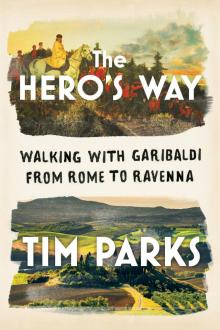 The Hero's Way
The Hero's Way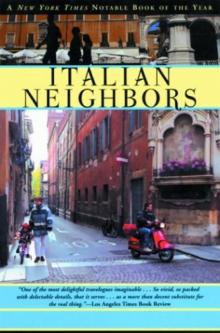 Italian Neighbors
Italian Neighbors Goodness
Goodness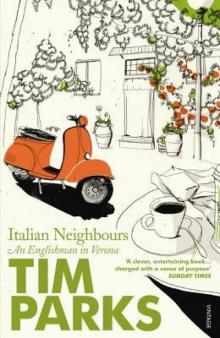 Italian Neighbours_An Englishman in Verona
Italian Neighbours_An Englishman in Verona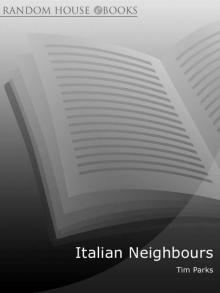 Italian Neighbours
Italian Neighbours Juggling the Stars
Juggling the Stars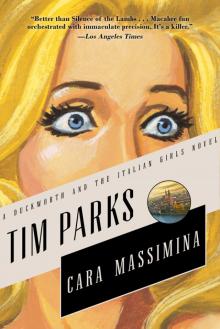 Cara Massimina
Cara Massimina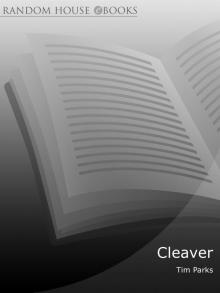 Cleaver
Cleaver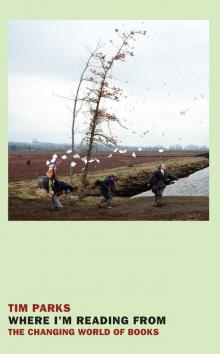 Where I'm Reading From
Where I'm Reading From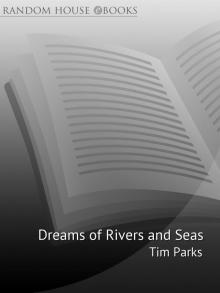 Dreams of Rivers and Seas
Dreams of Rivers and Seas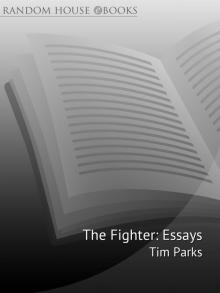 The Fighter
The Fighter In Extremis
In Extremis Painting Death
Painting Death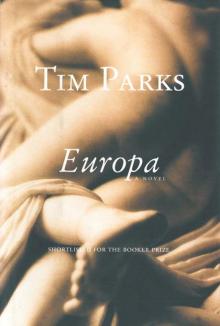 Europa
Europa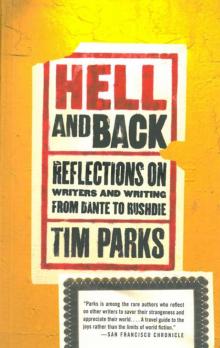 Hell and Back
Hell and Back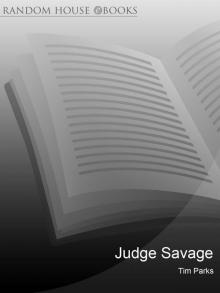 Judge Savage
Judge Savage Thomas and Mary
Thomas and Mary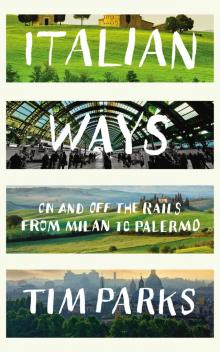 Italian Ways
Italian Ways Rapids
Rapids Mimi's Ghost
Mimi's Ghost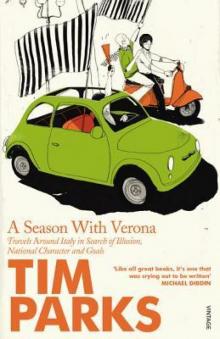 A Season With Verona
A Season With Verona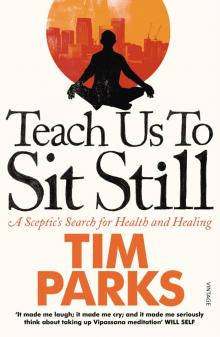 Teach Us to Sit Still
Teach Us to Sit Still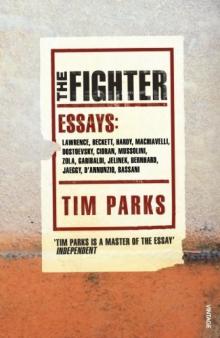 The Fighter_Literary Essays
The Fighter_Literary Essays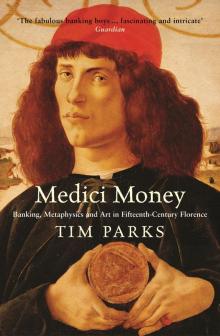 Medici Money
Medici Money